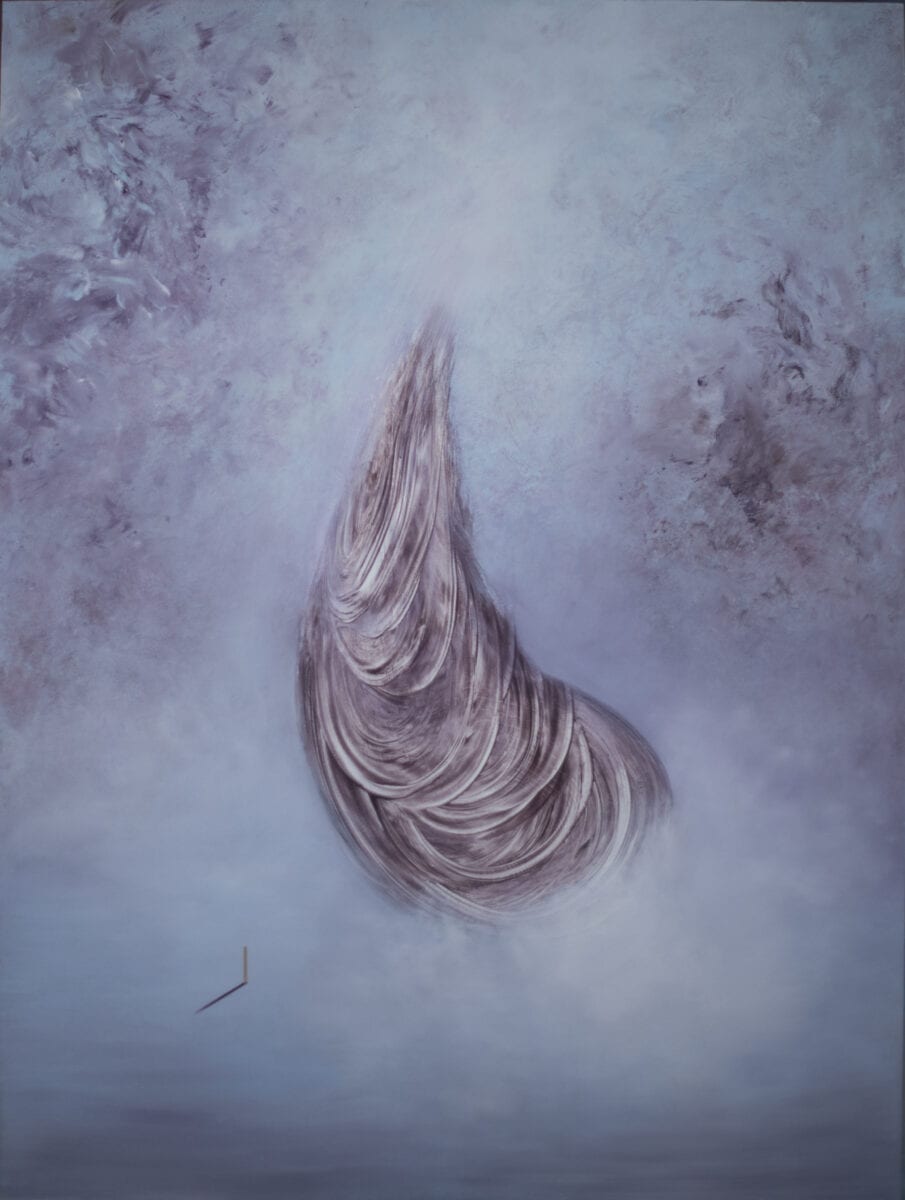Dr Suzi Morris creates mesmerising paintings that connect art and biological science. The works, which draw on sustained research and experience with viruses, have now become more relevant than ever. Morris has pledged to donate 50% of all sales of her latest works towards Imperial College London’s research efforts into COVID-19. She discusses the evolution of her practice with Aesthetica.
A: Can you briefly explain your theory of “The Viral Sublime”?
SM: The Viral Sublime opens up a new area for research on the sublime in the history of aesthetics. The theory evolved out of an interest in how we respond to events that are awe-inspiring yet terrifying, dangerous or life-threatening. The world response to the COVID-19 pandemic is a prime example. Drawing upon Burke and Immanuel Kant’s theories, and postmodern concepts of the sublime within contemporary art, I explore the terrifying and overwhelming power of the contemporary sublime in the form of viruses in my painting.
A: How did you become interested in this subject matter?
SM: Viruses became the focus of my attention in the aftermath of repeated attacks of HSK or Keratitis, which continues to affect my eyesight. I have viral scarring directly across my line of vision, so the constant awareness of sharpness next to the blur within my ocular field seems to manifest itself in my work. When I undertook my doctorate, painting the Naked Virus revealed how managing the ongoing medical interventions necessary – and understanding the therapeutic language used in the process of restraining the virus responsible for all my eye problems – was subconsciously nourishing my imagination and my painting practice. Around the same time, I discovered how scientists at Imperial College, London, were harnessing the powers of my particular virus and using it in cancer treatments. This concept of a virus being degenerative in my body, yet used to heal cancer patients, opened me up to how new technologies are revolutionising medicine through rapidly advancing genomic research.
My interest in the sublime has resulted from a culmination of lived experience through travelling and having my eyes opened to harsh realities of a visceral and sensual world plus managing the problems of the body. It wasn’t until I undertook my MA in Painting at The City & Guilds of London Art School that I began researching the history of the sublime.
A: You have made a pledge to donate 50% of all sales of your latest works towards Imperial College London’s research efforts into COVID-19. Why did you decide to do this?
SM: Much of my inspiration comes from science and I wanted to make a difference. Since my painting is so intertwined with medical research at Imperial College, I felt a moral sense of responsibility within the pledge to offer something back to help the scientists there who are under such intense global pressure to engineer a vaccine against COVID-19.
A: In your video statement, you outline that personal experiences have informed your practice. Could you share a little about this?
SM: I’m always looking at ways to translate my findings through painting. Life experiences seep into my practice – such as meeting the evolutionary scientists who revived a previously undiscovered ‘giant’ virus, buried in Siberian ice for over thirty thousand years. My imaginative life – and hence the development of my painting – has been shaped by memories and through managing my physical condition. A heightened sense of awareness in terms of the phenomenological experience of being in the body has ignited an investigation within my practice into what cannot be seen with the naked human eye, and what requires imaginary processes to make the invisible visible. A long-term fascination with the blur reflects my condition of living with impaired vision. Often, it’s only after a painting is finished that I can make sense of the culmination of personal bodily experience, art history, theory and new sciences that came together to create it.
A: You have said: “you can fit more of this virus (COVD-19) on the tip of a paintbrush than there are people in the United Kingdom.” How do your paintings merge art and science visually – through colour, texture and form?
SM: The relationship between my painting and the sublime sense of wonder that arises from major scientific discoveries is a fundamental concern. Oil paint acts as an extension of the body offering a bridge from the inner world. Whatever I’m reading for research or experiencing in my body inevitably seeps into the painting. If the work is for a specific project, there is a rigour to my research as I want that to come through in the painting. The works are limitless spaces where colour and form – articulated through the use of line – are used to evoke ideas of what is unseen to the naked eye, and a sense of being overwhelmed. The line or ‘biomarker’ creates a tension between the real and the imagined. What I was trying to convey in that statement is the scale of coronavirus, this invisible enemy which has become nature’s wakeup call in its terrifying ability to force the world to a standstill.
A: Why is it so important for the arts and sciences to come together – especially right now?
SM: The meeting of minds between artists and scientists goes way back to Leonardo da Vinci in the 15th century so it’s nothing new. Right now, more than ever, science has become central to our lives as genomic medicine seeps into mainstream healthcare. New technologies such as artificial intelligence (AI), to personalised genomics and robotics, are revolutionising the future of science and medicine. The idea that science can turn specific human genes on and off opens the doors to what it will mean to be human in the future. Collaborating with artists can offer a means to help break down the chasms of academia within complex science and offer society a more visual interpretation of these ideas.
A: How has the lockdown impacted you, and other artists?
SM: As a painter, isolation and quiet are fairly normal so I was grateful for the time to really focus on studio practice without feeling guilty over attending various events. I welcomed the release from the frantic pace of preparing for exhibitions and the opportunity to join in my local community in helping others. I’m very fortunate to have a studio attached to my home at the moment so despite having suffered the loss of two projects which I was very excited about, in many ways the lockdown offered me an unprecedented time to feel utterly at peace with what really matters to me. As the cultural calendar of exhibitions and talks has dissipated, exhibitions have been moved online. Zoom has enabled me to maintain studio visits with fellow artists and I’ve enjoyed the freedom to access online talks such as Katy Hessel’s podcasts celebrating women artists.
There’s been a deluge of artists sharing their creations online and supporting each other through the Artist Support Pledge founded by Mathew Burrows. Many artists like myself used it to support charities in need. I think as artists we are fairly adept at problem solving and quick to adapt to finding innovative ways to survive during a crisis.
A: What do you hope audiences take away from your work?
SM: As genomic medicine opens the doors to personalised medicine, one intention is to expand the dialogue between science, medicine and art to initiate change in society’s perceptions of disease, particularly viruses. Painting can humanise and enhance scientific content, infusing scientific findings with empathic understanding. Depending on the audience people will respond to the works in various ways. Ultimately, the paintings have to be capable of standing alone and are to be felt and experienced. Viewers will ascribe their own meaning to the works regardless of what I may intend. Art is never just one thing and I don’t believe that if a viewer is unaware of what underpins the work that it makes the work any less valuable. What matters to me most is when I hear how a reader of the painting has connected with the work and developed an understanding of their own relationship with it.
Find out more here.
Lead image: Suzi Morris, Genetic Spaghetti, 2019.
2. Suzi Morris, Burden of the Dendrite, 2017.
3. Suzi Morris, Chimera, 2020.
4. Suzi Morris, Landscape of Consciousness, 2020.
5. Suzi Morris, Chromatin Loops, 2020.









